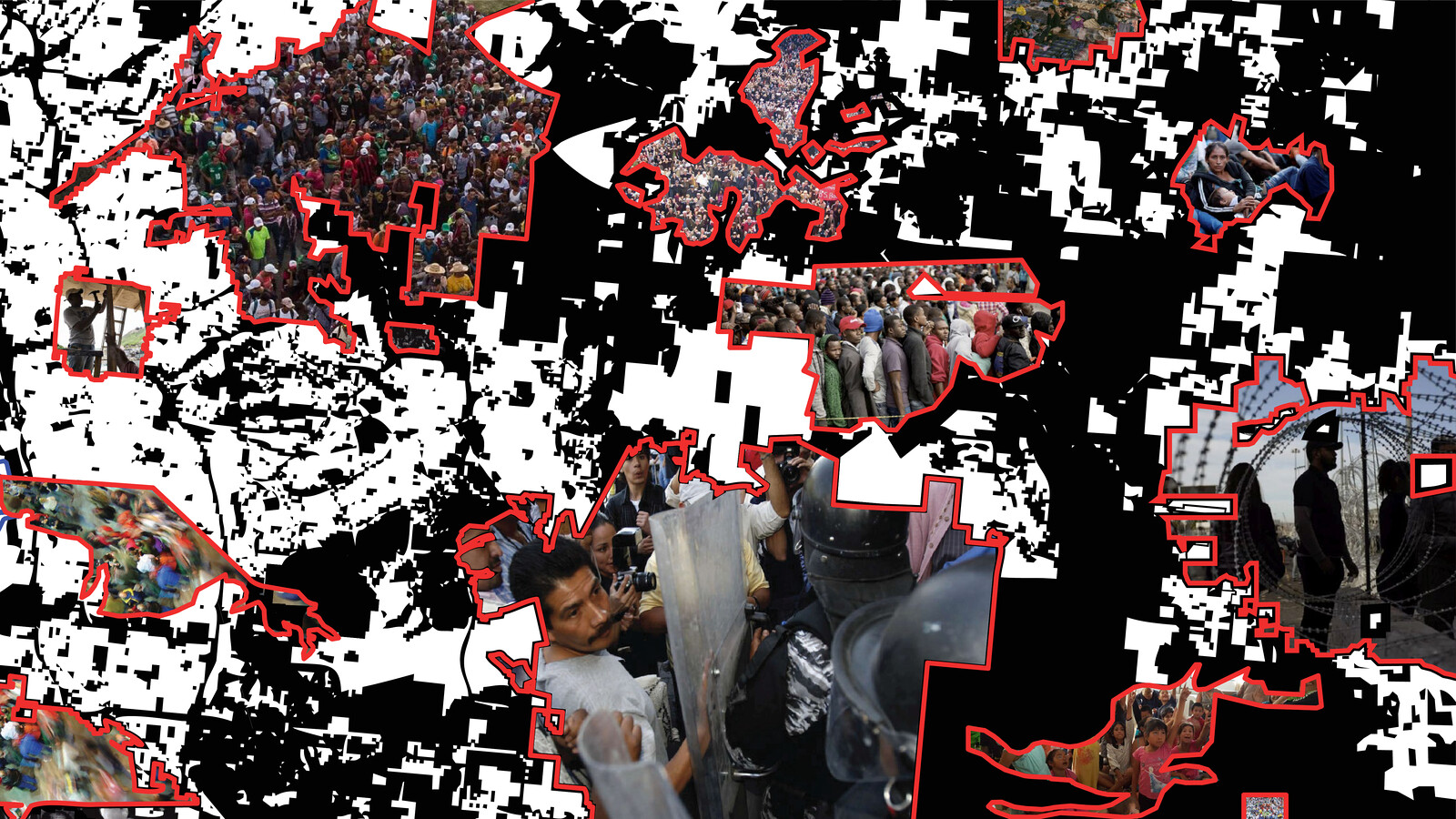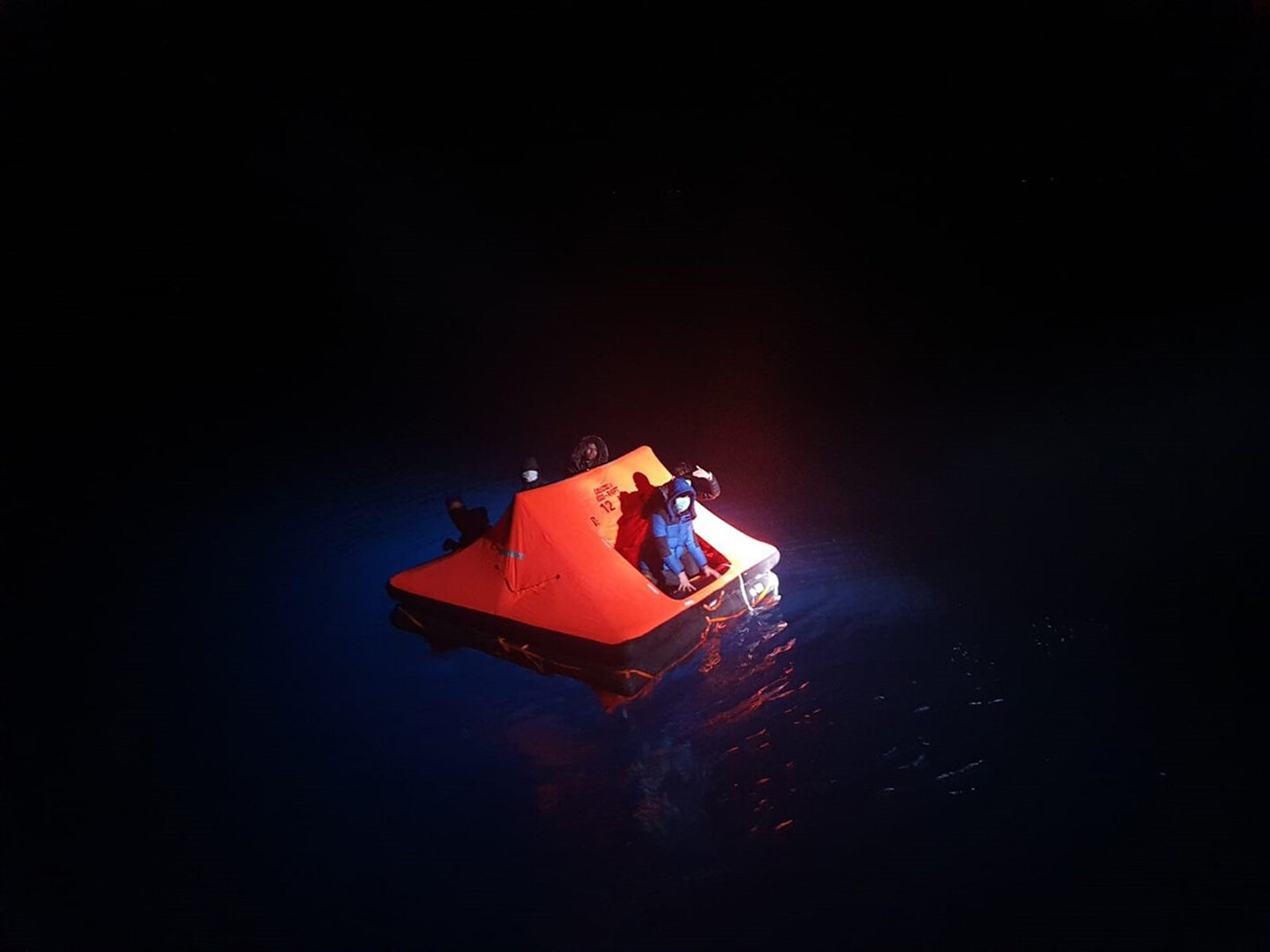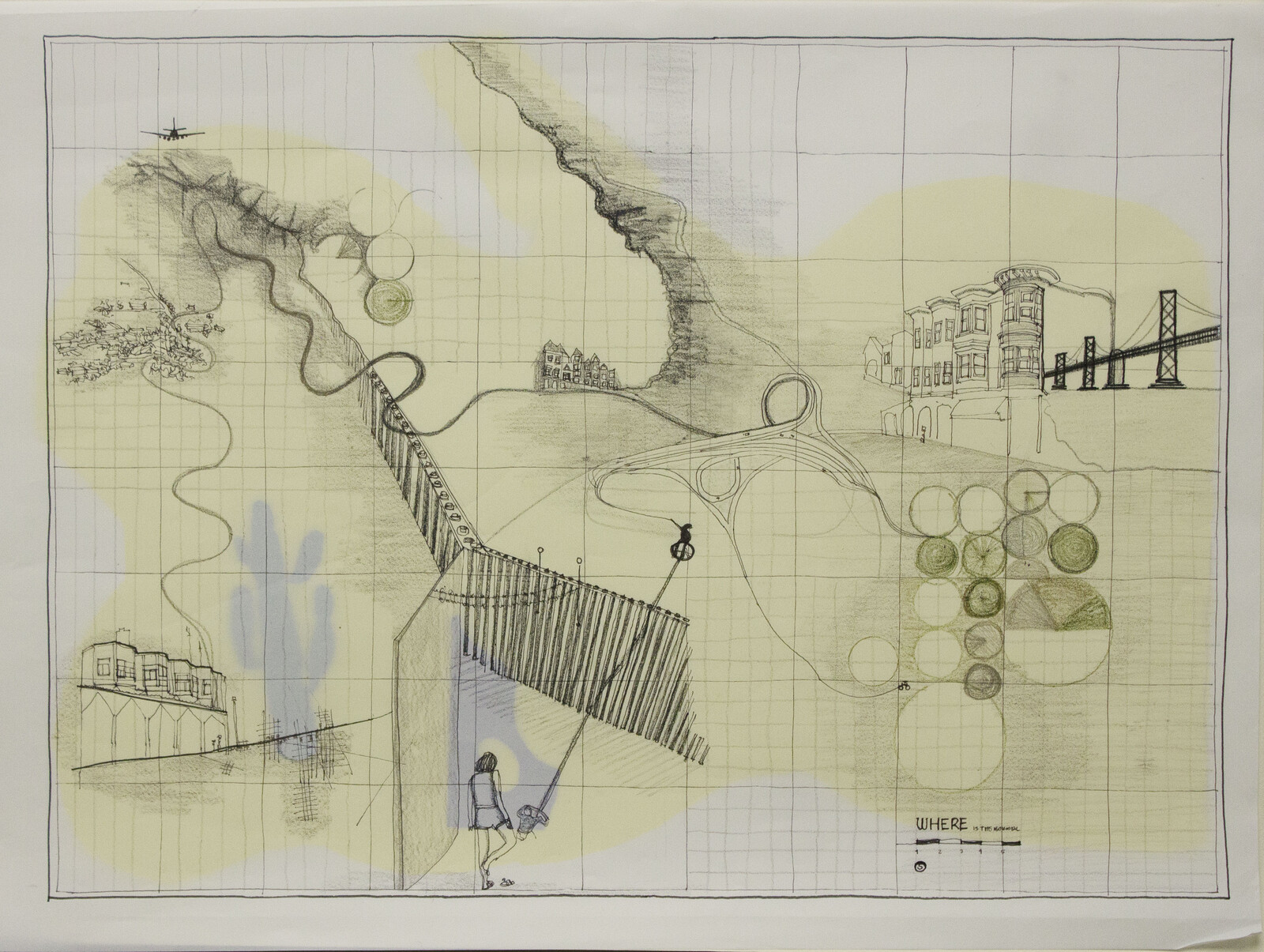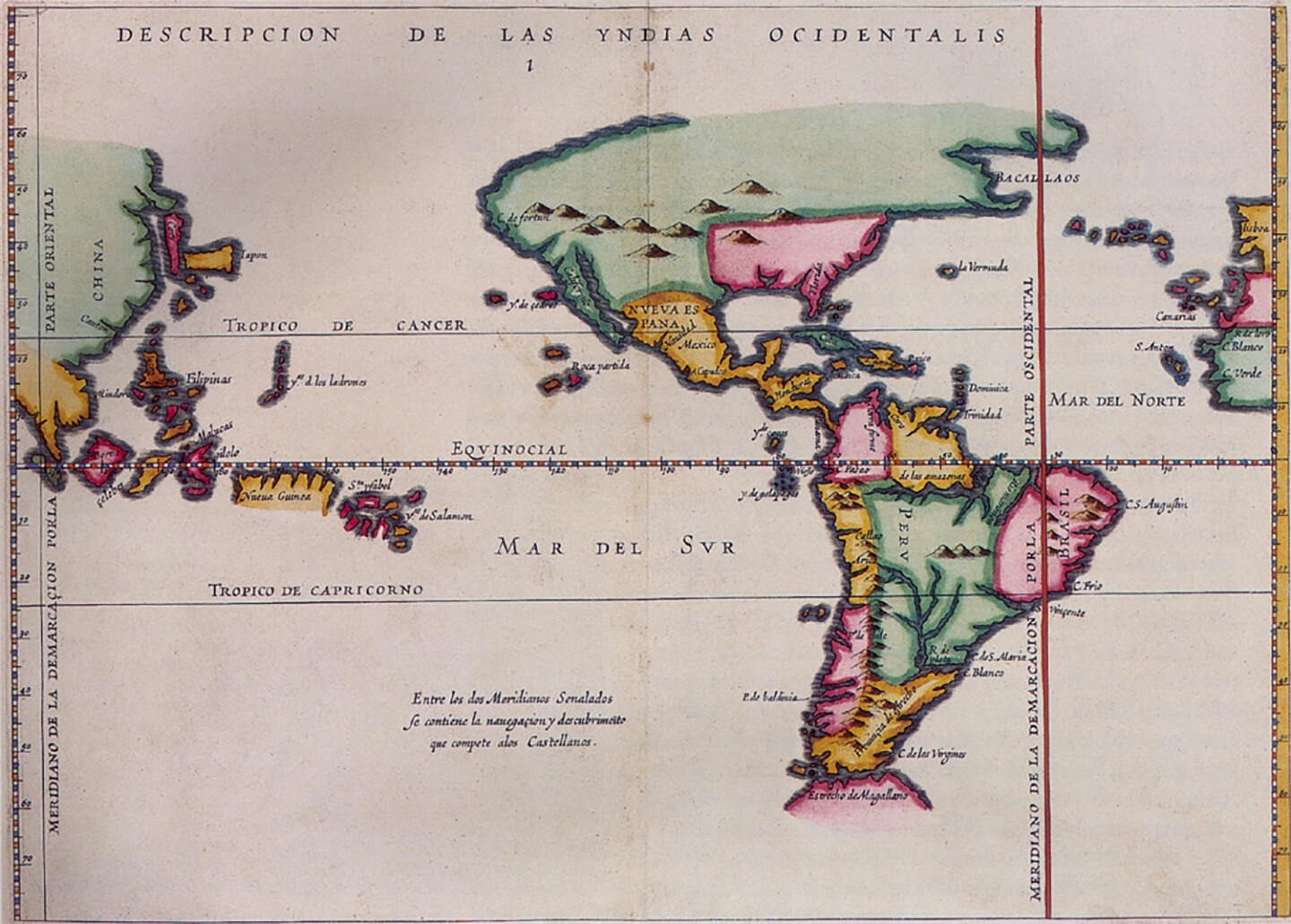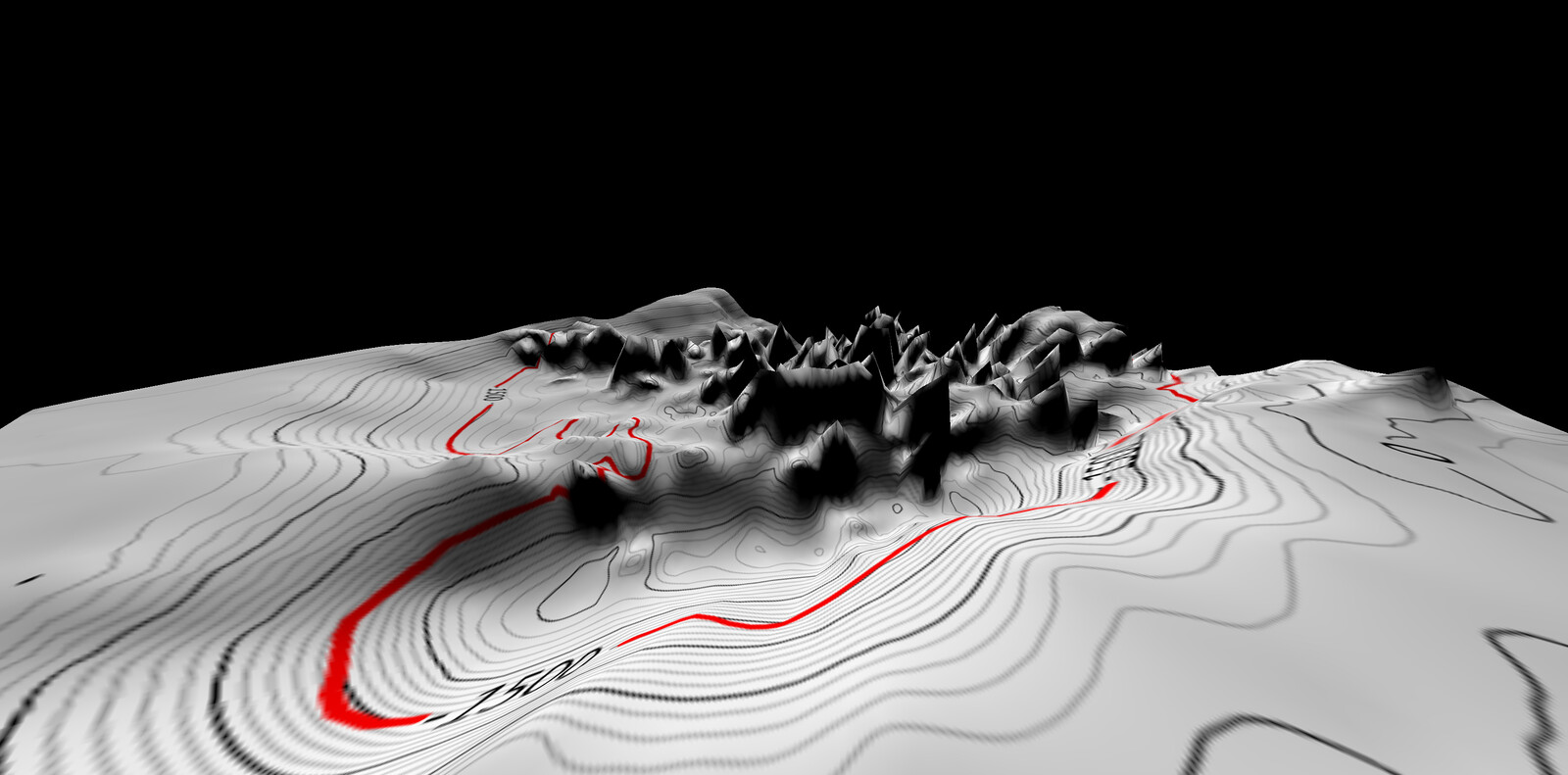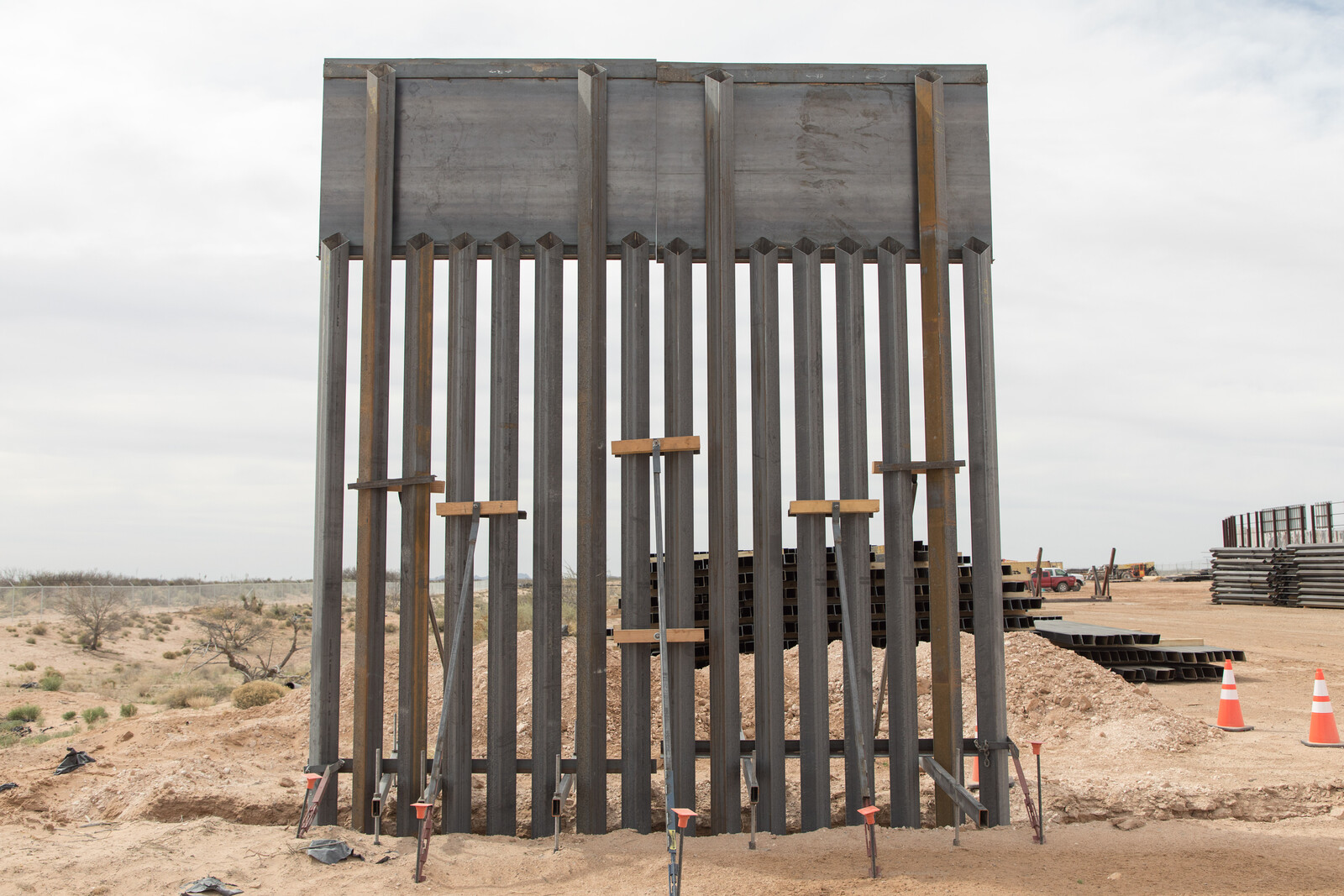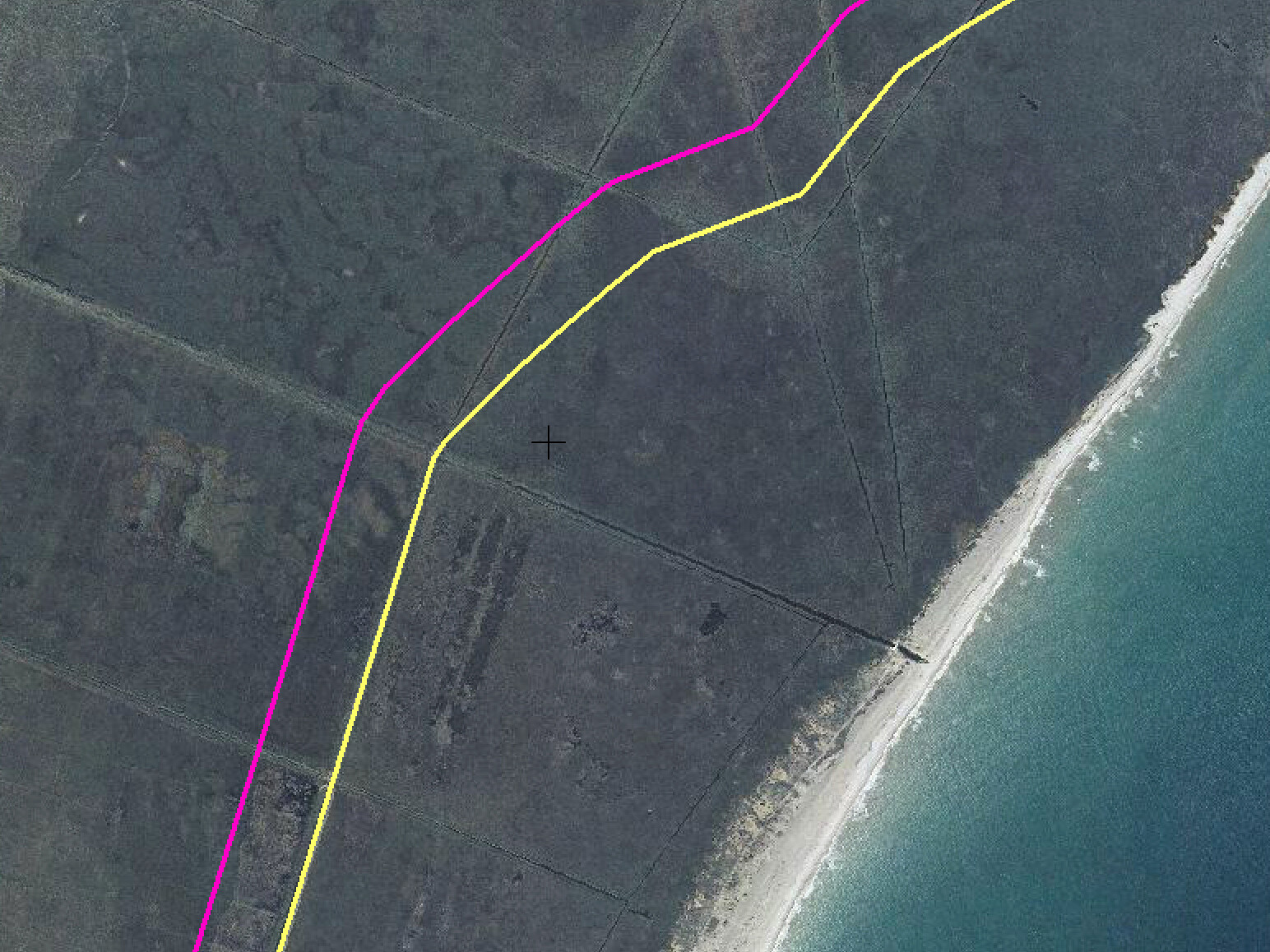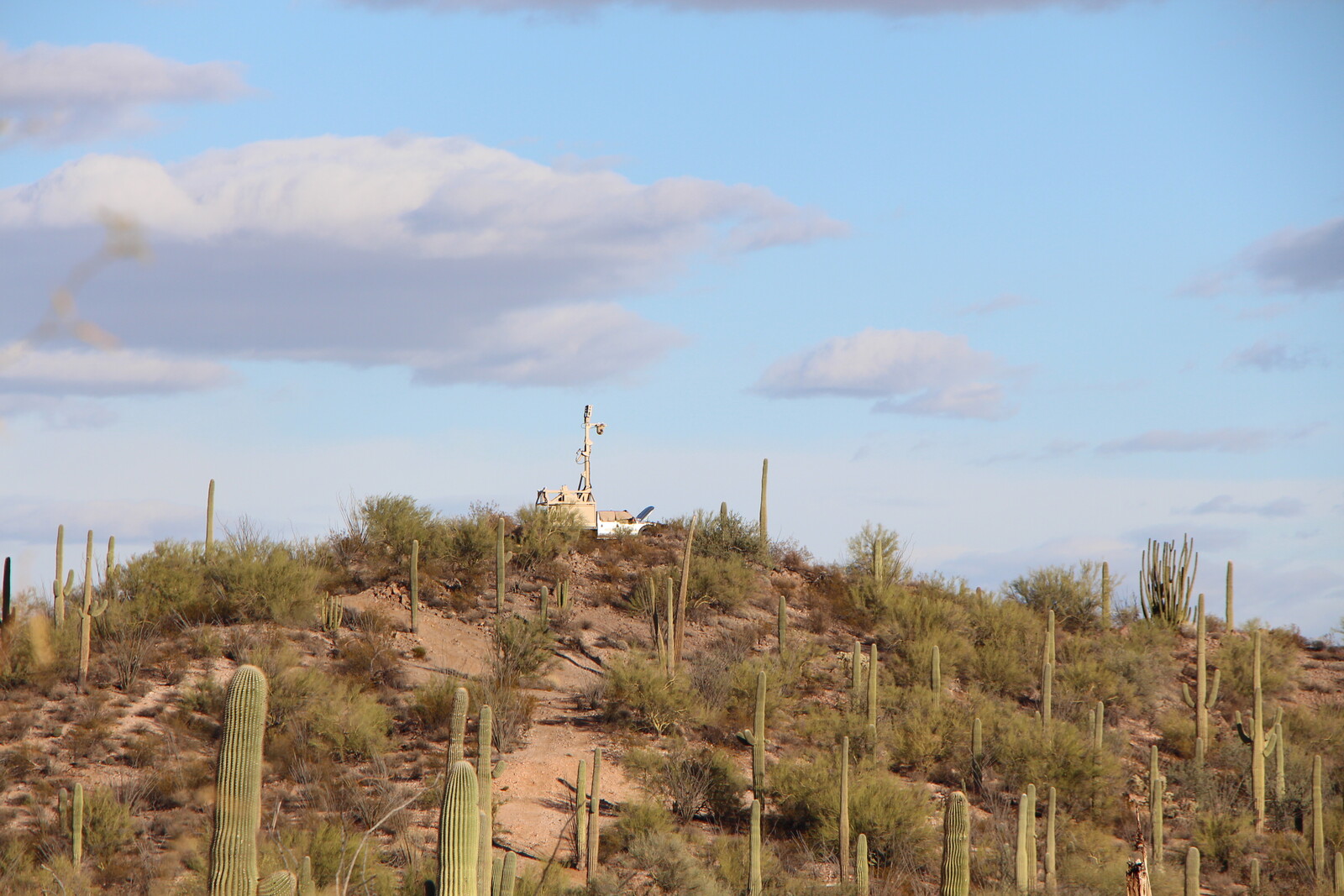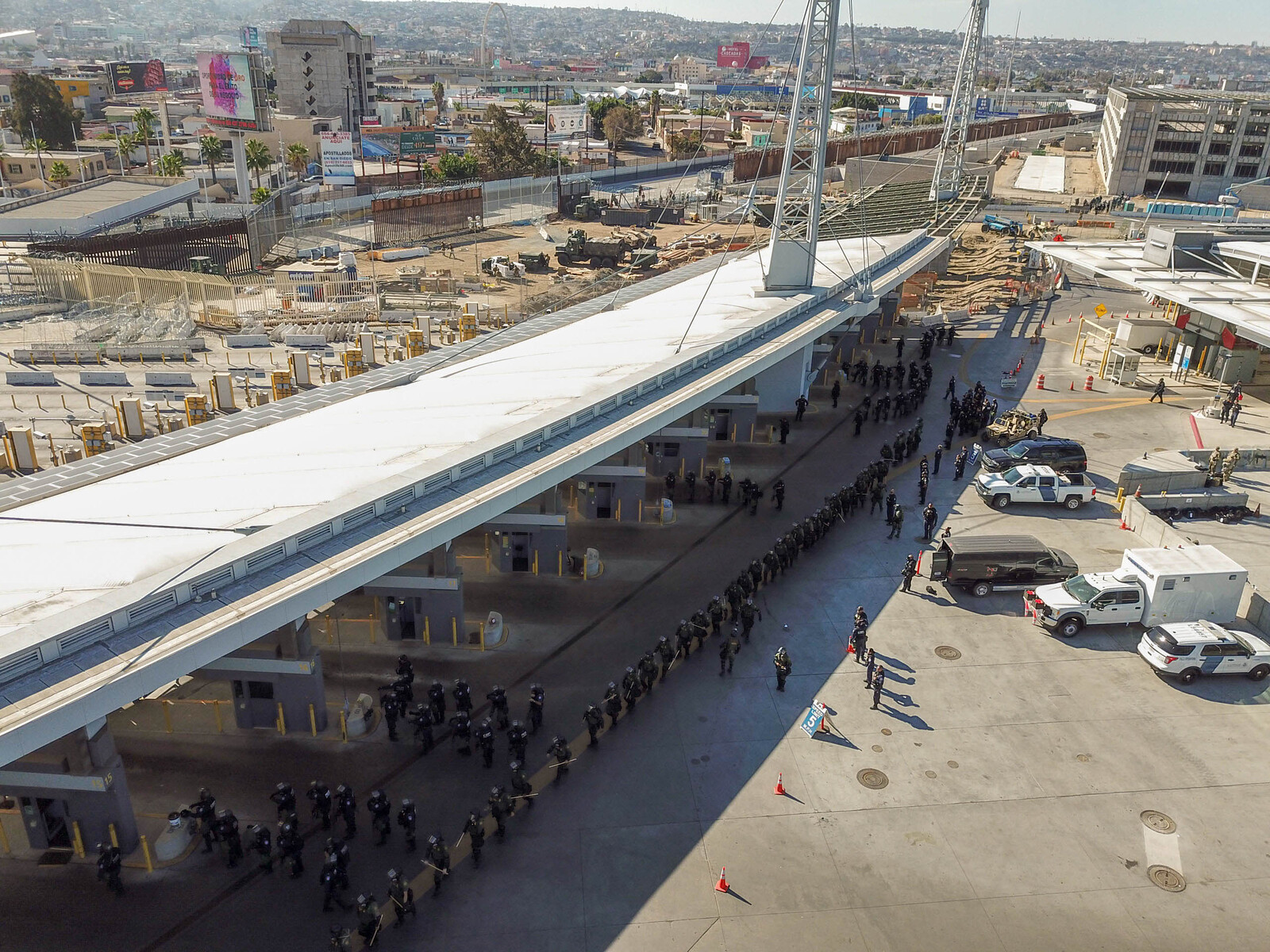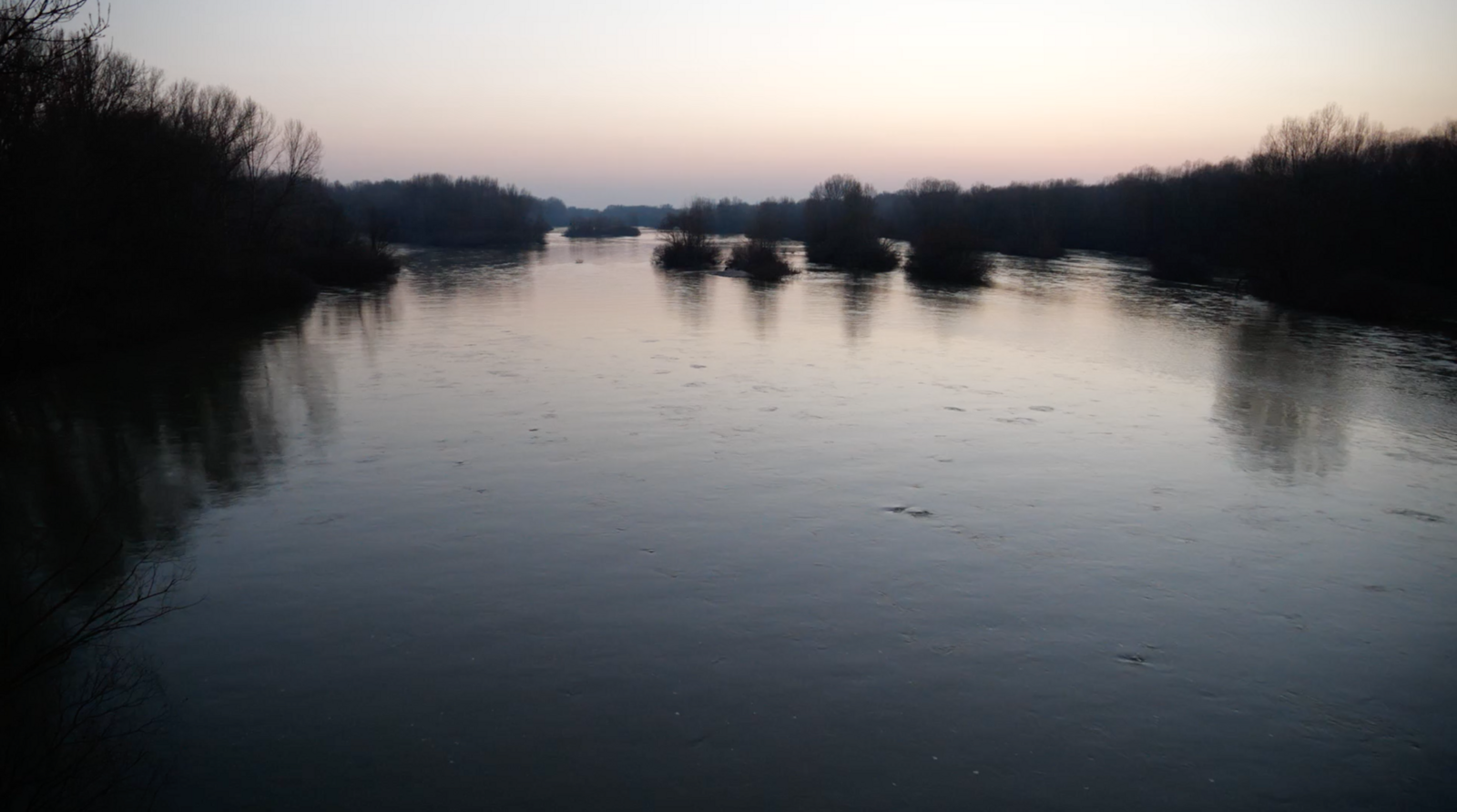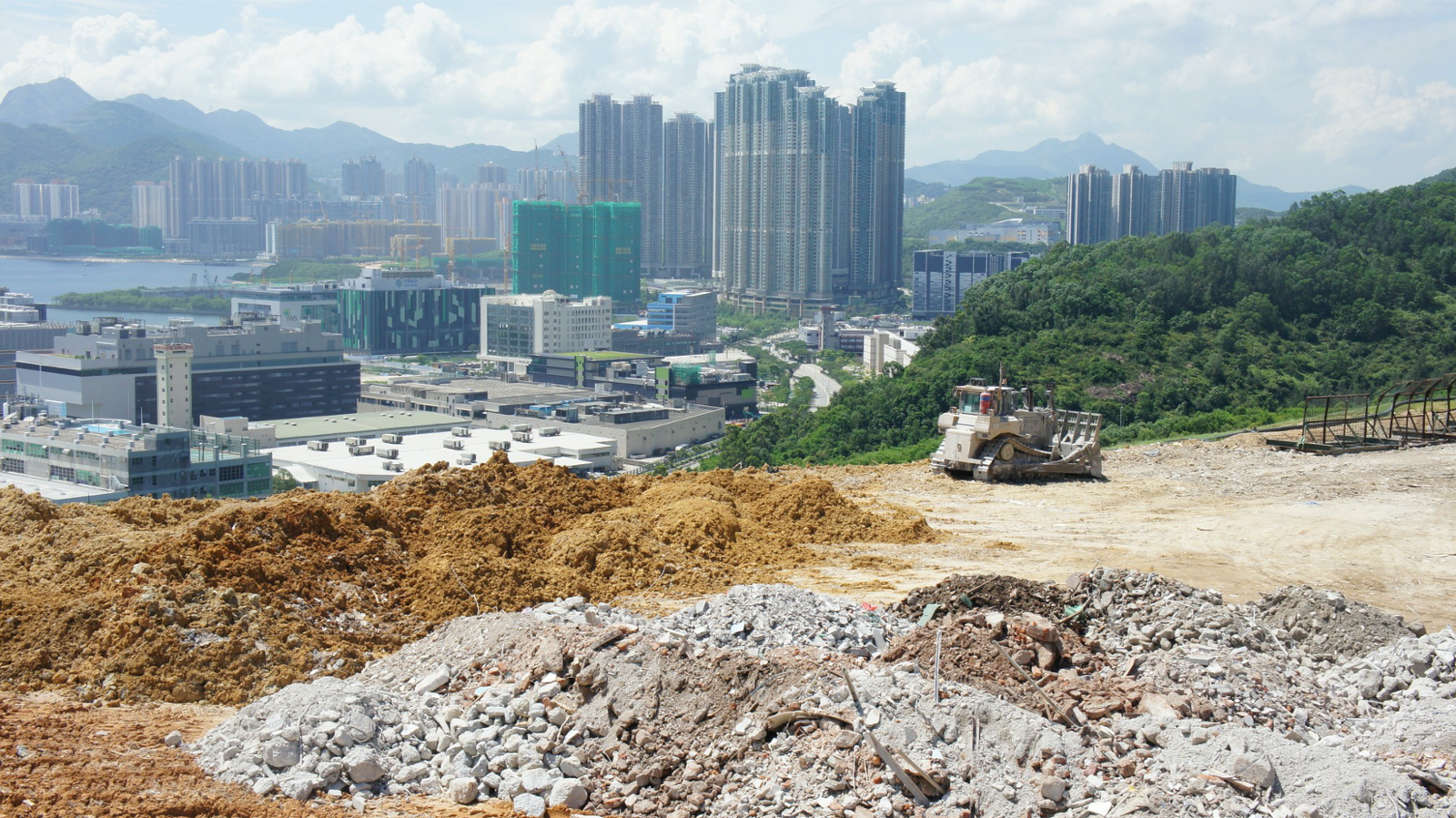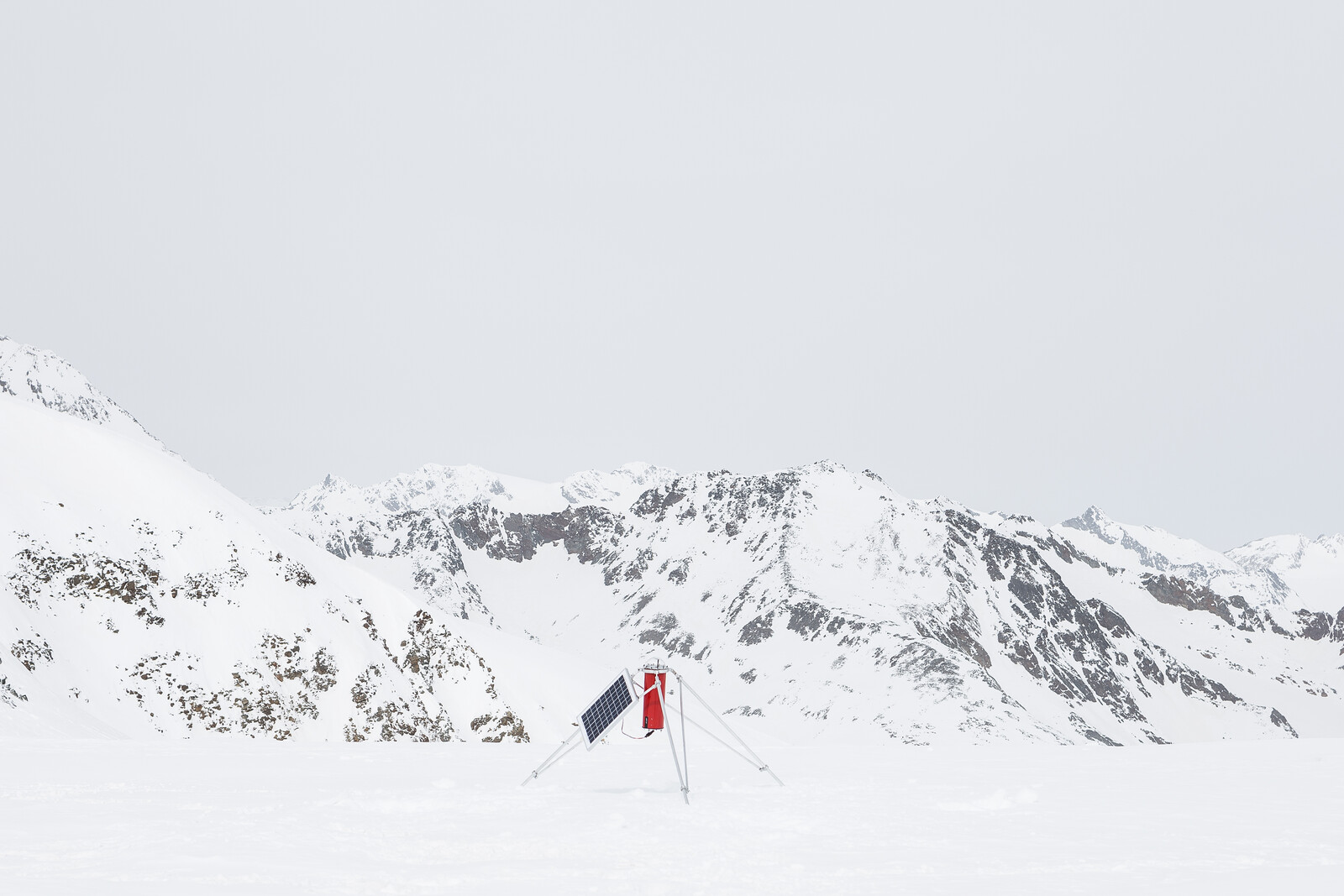In May 2012, the United Kindgom’s then-home secretary Theresa May announced in an interview the introduction of new, groundbreaking legislation in the field of immigration control. The aim of these new measures, she declared in language that was described as “uncharacteristically vivid,” was “to create here in Britain a really hostile environment for illegal migration. Work is under way,” she further explained, “to deny illegal immigrants access to work, housing, and services, even bank accounts.”1
Two successive immigration acts, passed in 2014 and 2016, translated this announcement into law—making access to various public and private services (such as medical care, education, housing, or banking) and the ability to work conditional on immigration status. Governmental agencies were also requested to share the data they routinely collect with immigration enforcement agencies. Since then, doctors, teachers, and university lecturers, but also landlords, bank employees, and driving instructors have been tasked with carrying out immigration checks and thus surreptitiously turned into border-control agents. One might say that with this legislation the border has infiltrated everyday life in ways that, while far from being new, have become unprecedentedly pervasive. The whole space of the state as defined by national borders has turned into a “hostile environment” for those without the right papers.
Albeit not always easy to document, the consequences of these measures have been disastrous, and have culminated in the 2018 so-called Windrush scandal. Thousands of people who had come to the UK from former colonies in the aftermath of World War II were asked to prove their right to stay, despite having entered the country legally and having lived there for decades. At least eighty-three of them were wrongly deported, and many more lost their homes, livelihoods, and basic rights in ways that even the UK High Court has ruled to be “racially discriminatory.”2
To be sure, this is hardly a story that concerns the UK alone. Across and beyond countries of the Global North, a generalized “atmosphere of hostility” has led to shrinking forms of social protection and increasing precariousness for all those classified as outsiders, with legislation passed to deny them access to work, housing, services, and education.3 This tendency has been only exacerbated by the global rise of nationalist and populist political forces, which has turned the scapegoating of migrants—not only those with a foreign passport, but anyone racialized as other—into a distinctive cornerstone of public discourse and action.
The process of making (mainly urban) space unlivable for some bears an eerie resemblance to the ways in which other, more “natural” environments have been turned into hostile spaces for those seeking protection and opportunities across borders. With legal ways of access such as visas foreclosed, many of those trying to reach countries of the Global North have in the last few years been funneled into more and more inhospitable and hazardous terrains—arid deserts, choppy seas, rugged mountain chains—with the assumption that the risk of injury and death they will face might deter them from attempting the crossing. In all these cases, it is the very geophysical characteristics of these environments that have been enlisted and harnessed as crucial tools of border control.
Imagine a migration trajectory that European border guards would consider typical: before reaching a European capital, a West African citizen without access to the prohibitive levels of social and material capital required to obtain a visa would first have to cross the increasingly militarized Sahara Desert. Then, often after months in appalling conditions in a Libyan detention center, they would need to embark on a rickety boat across the Mediterranean. If they make it onto Italian shores, they would then have to cross a rugged Alpine mountain pass by foot to avoid ever-tighter intra-European border controls, only to become subject to the anti-migrant laws once they reach their alleged destination.
While ample ethnographic research has rebutted the linearity of this teleological narrative, it is a vision that directly informs European bordering practices, such as the European Council’s notion of “Integrated Border Management” that was introduced in the early 2000s. Through various forms of cooperation in surveillance, risk analysis and deportations, amongst border control agencies both within and without the EU, this form of policing operates “before, at, and after the border”, punctuating the above-mentioned trajectory with the aim of turning the environments it traverses into spaces of hostility for people on the move. This and other similar strategies of border control have de facto locked in a connecting logic the “natural” borderlands located at the fringes of the Global North to urban geographies in Europe, the United States, Australia, and beyond. Rather than a singular occurrence, then, it is a multiplicity of hostile environments that have sprung up across “natural” and civic spaces alike.
Liquid Violence
Since 2011, and in the context of a project called Forensic Oceanography, I have critically investigated the militarized border regime imposed by European states across the Mediterranean Sea, analyzing the political, spatial, and aesthetic conditions that have led to more than thirty thousand migrant deaths recorded over the last thirty years.4 Together with my colleague Charles Heller, as well as a wide network of NGOs, lawyers, scientists, journalists, and activists, we have produced maps, videos, visualizations, and human rights reports that attempt to document and challenge the transformation of the Mediterranean into the deadliest crossing in the world: the epicenter of those “landscapes of deaths” represented by global borders.5 In these works, we have argued that while the sea might already in some way constitute a “natural boundary” due to its geophysical characteristics, it is through very specific practices, protocols, and laws that these characteristics have been weaponized against specific categories of people and this environment rendered hostile to them.
Complex and overlapping jurisdictions at sea play a fundamental role in creating the conditions that structurally lead to the death of migrants. At sea, border crossing is a process that can last several days and extends across an uneven and heterogeneous territory that sits outside the exclusive reach of any single polity. As soon as a migrants’ boat sets off, it passes through the many jurisdictional regimes that crisscross the Mediterranean: from the various areas defined in the UN Convention on the Law of the Sea to Search and Rescue Regions, from ecological and archaeological protection zones to areas of maritime surveillance. At the same time, these very same boats are caught between legal regimes that depend on the juridical status applied to those onboard (refugees, economic migrants, illegals), on the rationale of the operations that involve them (rescue or interception), and on many other factors (the flag and insurance agreements of the rescuing vessel, etc.).
These overlaps, conflicts of delimitation, and differing interpretations are structural characteristics of the maritime frontier that have allowed states to simultaneously extend their sovereign privileges through forms of mobile government and elude the responsibilities that come with it.6 For instance, the strategic mobilization of the notion of “rescue” has allowed coastal states to justify police operations on the high seas, yet the overlapping and conflicting Search and Rescue Regions have also led to recurrent cases of nonassistance to migrants in distress.7 In contrast to the trope of the sea as a lawless zone, whose liquidity would make it impossible to draw stable boundaries, the proliferation and spatial entanglement of different legal regimes across the maritime border has created what Keller Easterling calls a “disposition”: an “unfolding potential,” an “inherent agency” that “makes certain things possible and other things impossible,” ultimately producing large-scale violence.8
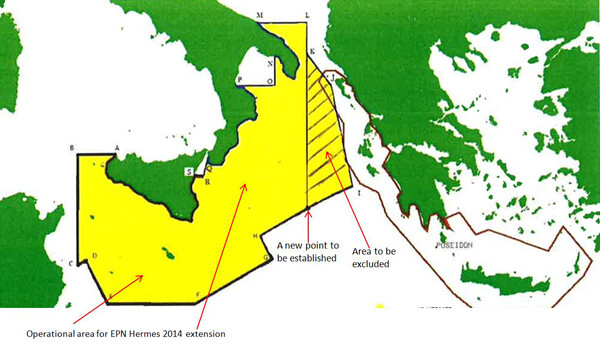

Evaluation of operational area shifts, from a 2014 Frontex document titled “Concept of Reinforced Joint Operation Tackling the Migratory Flows towards Italy: JO EPN-Triton.”
While these conditions have created the overall context in which migrants’ deaths occur on a structural basis, the sea has been made more or less deadly through specific operational shifts. In particular, operational areas of different maritime activities (border control operations such as those conducted by the European Border and Coast Guard Agency, Frontex, or the anti-smuggling operations of the European Union Naval Force Mediterranean) have been drawn and redrawn over the course of the last few years. For instance, in late 2014, Italy discontinued its military-humanitarian Mare Nostrum mission, which had rescued thousands of passengers over the previous twelve months. In response, EU agencies sought to use the shrinking of rescue capacities and the resulting increased risk for migrants as a means of deterrence—even though well aware that this would have led to an increase in the number of fatalities.9 These different practices disclose a specific form of liquid violence that operates at the European Union’s maritime frontier—one that operates in an indirect way, not only at sea but through the sea, with the latter mediating between state policies and practices on the one hand and the bodies and lives of migrants on the other.10
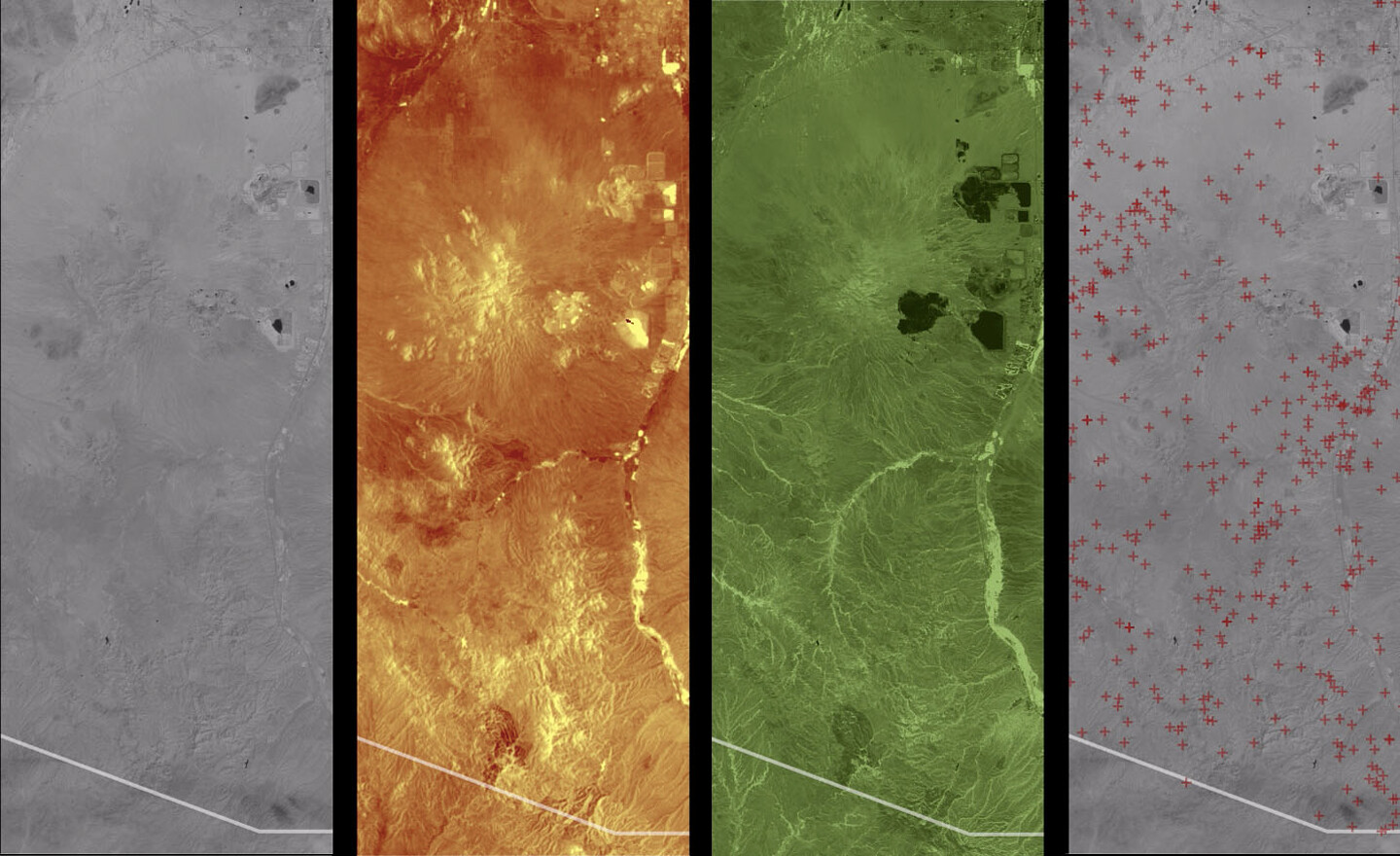

The Altar Valley desert corridor in Arizona, north of the US-Mexico border, where No More Deaths/No Más Muertes strategically stations caches of water jugs along known migrant paths. Screenshots from an animation, from left to right: satellite image; ground temperature; vegetation density; the location of recovered human remains, 2001–2019. Realized by the author as part of the exhibition “Hostile Environment”(s) at ar/ge kunst, Bozen/Bolzano. Based on GIS analysis produced by Geoffrey Alan Boyce, Samuel N. Chambers, and Sarah Launius. Projection development and 3D model: Tom James. Physical model: Kamil Dalkir.
The Design of Hostility
This relation between practices of border control and environments has been perhaps most fully theorized in relation to the US-Mexico border, where the notion of “prevention through deterrence” was adopted by US border guards as early as 1994.11 This enforcement strategy calls for the deployment of massive numbers of agents as well as so-called “tactical infrastructure” (e.g., surveillance technologies, sections of walls or fences) along the sections of the border that are easiest to cross, usually around urban areas. These concentrations, in turn, lead migrants to attempt to cross in areas such as the Sonoran Desert that are much more inhospitable and, therefore, more difficult to traverse, often leading to cases of death. The declared aim of this tactic is to facilitate border enforcement by deterring potential migrants from attempting the perilous crossing and by pushing others into places where they are slower, and their chance of survival drops dramatically.
“Prevention through deterrence” highlights how “nonhuman actors—plants, animals, and biophysical processes—are constitutive of boundary making” in the same ways in which border guards, national and international institutions, legal frameworks and surveillance systems are.12 The term “geopower” was coined by Elisabeth Grosz to underline how geographic environments are endowed with “forces contained in matter that precede, enable, facilitate, provoke and restrict ‘life.’”13 While many other examples could be mentioned of enlisting geopower as a crucial mechanism of border control, what emerges in all of them is the process of design at work in the becoming hostile of deserts, oceans, and mountain ranges as borderlands.14
Emphasizing the way in which legal geographies, surveillance technologies, and bureaucratic protocols have turned certain environments into rugged borders is also a critical antidote to (neo-)colonial narratives that continue to imagine them as always already empty, remote, and unlivable. This vision willfully—and culpably—erases not only centuries of indigenous inhabitation and trans-regional exchange, but also the extractive and developmental processes that in many cases have indeed turned those areas into toxic sacrifice zones.15
Paying attention to these processes allows simplistic accounts of the nexus between environment and migration to be complicated beyond some of the narratives which have crystallized around the iconic, and by-now ubiquitous figure of the “environmental refugee.” The introduction of this notion has raised public awareness on the harmful impacts of the environmental crisis, and opened up an important space to imagine new (para-)legal instruments for defending vulnerable populations. Yet, it has also become part and parcel of a technocratic discourse that, by instituting a mechanical relationship between environmental degradation and migration, paints apocalyptic scenarios of mass displacement. It should not come as a surprise, then, that the very expression “environmental refugee” was initially formulated in the context of neo-Malthusian debates on population growth and resource scarcity in the wake of the 1973 oil crisis.16 Since then, the alarmist tones of many mainstream discussions about environmental refugees have fueled an approach that sees migration as a key threat to global stability, one to be tackled from a security perspective.
Against this “naturalization of causes,” it is imperative to foreground the complex structures of causality that connect, in non-linear ways, individual desires with complex social, cultural, and economic conditions, and ultimately lead to decisions about whether or not stay or move.17 Here, climate itself “is difficult to tease apart from other variables (cultural, political, economic) … not simply because these factors are entangled, but because all these aspects of collective life always already bear the trace of climatic and environmental change,” and are thus “even more deeply implicated with politics, ethics and culture than we usually imagine.”18 At the same time, it is also paramount to foreground the very geohistorical conditions that have made the global environmental crisis not only possible but inevitable. This means going deeper into the roots that connect (neo-)colonial extractive practices and migration as part of the same historical continuum.19 It means thinking about displacement, as Rob Nixon has suggested, not simply as “the movement of people from their places of belonging,” but also as “the loss of the land and resources beneath them, a loss that leaves communities stranded in a place stripped of the very characteristics that made it inhabitable.”20
This form of “accumulation by displacement” is well visible in many contemporary borderzones whose contested political ecologies are deeply intertwined with histories of dispossession and migration.21 Take, for instance, the fragile ecologies of the Rio Grande Valley, which marks the easternmost section of the US-Mexico land border. As Avi Varma writes:
From the dispossession of Native and Hispanic inhabitants to the establishment of water-intensive agricultural settlements, conflicts around water have fundamentally shaped this landscape and the regimes of mobility that traverse it. As an agent of bordering, the hydrological body of the Rio Grande river has always proved an unstable and highly ungovernable ally, which continues to shift and change course at both geological and seasonal timescales. Moreover, in the transition from indigenous land use to ranching and finally intensive farming, water has been forcibly redirected from zones deemed non-productive towards those deemed profitable, partitioning the South of Texas into a chequerboard of water-rich regions and sacrifice zones on which migrant detention centers, like the infamous Tornillo tent city, have been built. In the words of feminist and Chicanx author Gloria Anzaldúa, the “tragic valley” of the Rio Grande river is a “serpent nailed to the fence” of the border, its waters serving less as a source of life and connection than as a marker of their absence.22
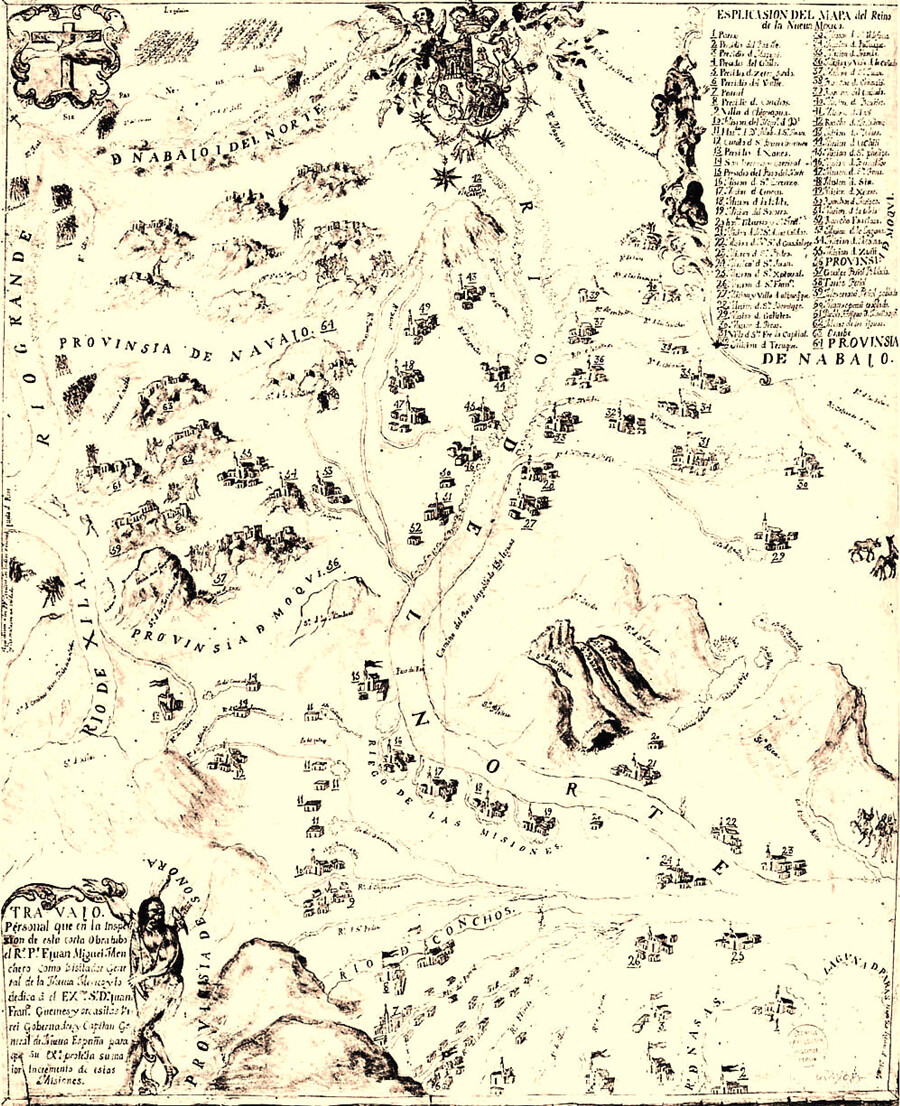

Fray Juan Miguel Menchero, Map of Rio Grande and El Paso Valleys, showing “Riego de las missiones” (colonial irrigation canals), c. 1740. This colonial map depicts the emergence of the settler colonial infrastructure of small townships, irrigation canals, and agricultural production. From Avi Varma’s contribution to the “Atlas of Critical Habitats” for the exhibition “Hostile Environment”(s) at ar/ge kunst, Bozen/Bolzano.
Environmental Governmentality
When I think of the term “hostile environment” it conjures up notions of a war zone, of environmental degradation or an inhospitable climatic event, perhaps an earthquake—something stark and unpleasant, like a scene from a World War I killing field. I do not think—or, I should say, I had not previously thought—of it as something to do with my own country.
—Lord Bassam of Brighton, House of Lords, June 14, 2018.[figure Quoted in: Dan Hicks and Sarah Mallet, Lande: The Calais “Jungle” and Beyond (Bristol: Bristol University Press, 2019).]
Beyond their obvious differences, the bordering practices at work across the Mediterranean, the arid regions on the US-Mexico border, and urban life in the United Kingdom all appear to be the expression of a similar form of power, one that does not operate by disciplining specific subjects but rather by intervening in the environment they inhabit or traverse.23 This resonates with the kind of governance that Michel Foucault had started to write about in some of his later work on biopolitcs: what he called, echoing his notion of governmentality, “environmentality.” In a few scattered notes, the French philosopher described the then-budding forms of neoliberalism as “an environmental type of intervention,” rather than a subject-based or population-based distribution of governance.24 While the notion of environmentality has been taken up predominantly in the context of environmental studies, Jennifer Gabrys usefully reconceptualizes it “as a spatial-material distribution and relationality of power through environments, technologies, and ways of life,” expanding the concept to include “those distributions of power that influence not just life, but also how to live.”25
In this sense, a hostile environment could be understood as a space in which certain “ways of life” have been made unviable. The NGO Corporate Watch effectively captured this aspect in regards to the situation in the UK, when it argued that the rationale of Theresa May’s policies could be summarized as follows: “if the government can’t actually seal tight the external borders, it can push unwanted ‘illegals’ to leave, or deter others from coming in the first place, by making it near impossible to live a normal life.”26 May’s hostile environment policies have conjured up a diffused “atmosphere of surveillance” that has infiltrated the most elementary infrastructures of living, a form of racialized violence that has become, in terms proposed by Christina Sharpe, as pervasive as the weather.27
Corporate Watch also foregrounds another important aspects on this form of bordering, which seems to have acknowledged what many critical scholars have been saying for years: that, despite continuous claims of the contrary, borders do not simply keep people out (and often fail to do so), but rather manage them inside and across territories.28 Paraphrasing anthropologist Ghassan Hage, we might say that hostile environments exist at the intersection of two sets of laws: one aiming to contain and restrict people’s movement to their respective nation-states, and the other seeking to govern their social (dis-)integration.29 The Windrush scandal is quite revealing in this sense, as it shows that those racialized as outsiders can never quite get entirely “inside,” even when residing legally. Contrary to how this event has been discussed in the press, the tragedy it revealed was therefore not how deserving citizens were treated like underserving aliens, but that certain categories of people can never become fully part of the national community, regardless of their juridical status.
By exposing the racial nature of borders, the Windrush scandal thus threw into sharp relief the mechanics of a regime of global apartheid, one that is better understood, as suggested again by Hage, as “two separate realities that coexist within the same global space: on the one hand, a world where a ‘third-world looking’ transnational working class is made to feel that national borders are exceptionally important and difficult to cross; and another experienced as open by the largely White upper classes.”30 This spatial arrangement is less reminiscent of the image of the “Fortress” or that of the Wall, which have often been mobilized to emphasize borders’ exclusionary nature, and more of that so eloquently represented in China Mieville’s dystopic novel The City and the City, where two distinct yet overlapping cities are kept apart by their citizens’ ability to “unsee” those from the other city.
The notion of environment, when understood not simply as the “environs of humans” (that which is around and outside of us) but rather as a dynamic, socionatural space, might allow us to capture this diffused and pervasive nature of contemporary borders more effectively than the linear metaphors that have been inherited from Westphalian mythologies of sovereign territoriality. It is from this angle, perhaps, that we might start to think about the border control practices mobilized in urban areas in the United Kingdom and those operating across oceans, deserts, and mountains, as different but intimately related expressions of the same logic of border control and of its expansive, multiscalar reach. In both cases, the border becomes a pervasive environment that subtracts life-sustaining resources (from water and food to rescue and healthcare provisions) and exposes migrants to harsh socio-natural conditions (not only extreme heat or cold, or chronic food and sleep deprivation, but also the lack of access to any social support). In both cases, the environment stops being simply a site of border control, and rather becomes one of its modes of operation.
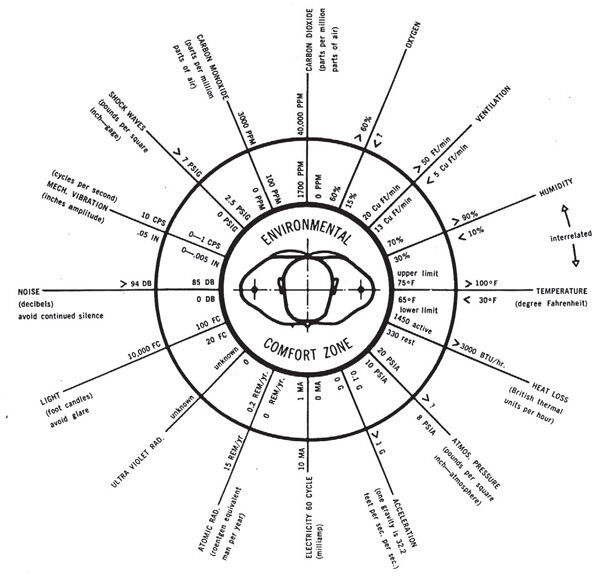

One of the most prominent diagrams in Henry Dreyfuss’s renowned design standards guide, The Measure of Man (New York: Whitney Library of Design, 1967). It encapsulates a well-engrained modernist vision that sees human beings as sharply separated from and constantly under threat by different environmental forces.
Building Spaces of Sanctuary
It is urgent to imagine what shape practices of solidarity could take in this age of intensified hostility. If the creation of hostile environments involves the denial of basic services and provisions, then a crucial task becomes building life-sustaining infrastructures of support. The notion of sanctuary, whose genealogy extends back to the use of religious buildings as spaces of refuge, might provide a useful lens to think about this task. In the last few years, the term, which first emerged in the US, has been used to define a diffused and multifarious movement of municipalities, religious congregations, and many other initiatives all around the world that support migrants regardless of their status. The aim of this loose network is to “stabilize access to substantive rights and provisions” that federal and national legislation would want to curtail. As Angela Naomi Paik writes about the US, “the fact that practices [of criminalizing immigrants and other marginalized communities] are so pervasive means that the connections for building … a radical movement that challenges different forms of domination already exist.”31 In this sense, “sanctuary provides an expansive archive of social movements that we might not otherwise see as being connected.”32
In the UK, this multitudinous front of struggle includes groups like Uni Resists Border Controls, Docs Not Cops, Against Borders for Children, and Homes Not Borders: alliances of academics, healthcare workers, parents, landlords, and renters who directly resist their own enlistment as border controllers, all the while supporting those targeted by hostile environment policies. Examples also abound across those harsh terrains traversed by migrants, where spaces of sanctuary take the form of networks supporting unauthorized movement in ways that more or less explicitly recall the experience of the American Civil War-era underground railroad. These includes initiatives like the Alarm Phone, an activist-run emergency hotline for migrants in distress at sea; the “civil fleet” of rescue vessels in the Mediterranean, which has taken to the sea in response to state authorities’ curtailing of search and rescue missions; solidarity groups that provide food, shelter, basic information, and legal support to migrants from Palermo to Calais, from the Alps to the Balkans; or groups like No More Deaths/No Más Muertes, which has been providing water and first aid across the treacherous deserts into which migrants have been funneled at the US-Mexico border.
These forms of “pirate care” open up spaces of resistant sociality often by intervening in the grey areas at the margins (when not in direct refusal) of various bureaucratic practices, laws, and technologies.33 They rub scales of intervention against each other, fighting global borders through municipal jurisdictions and affirming a planetary “right to the world” through local networks of mutual support.34
Against the exclusionary “lifeboat ethics” that ecofascism promotes as the only possible response to the ecological crisis, the right to mobility and the possibility of escaping toxic milieus must be reaffirmed. At the same time, resistance to hostile environments involves rethinking care as the practice of “maintain[ing] and repair[ing] a world so that humans and non-humans can live in it as well as possible in a complex life-sustaining web.”35 As marginalised communities have known all too well and for far too long, and as the current pandemic has possibly made even more acutely clear, hostile environments do not only (differentially) infiltrate our social lives. They also penetrate our bodies, blurring the very distinction between an inside and an outside that our skin gives us the illusion to uphold. They are the food we eat, the water we drink, the air we breathe.36 Fighting them, thus, implies struggling against what Malini Ranganathan calls “environmental unfreedoms”: all those “threats to our water, air, food, land, schools, and homes” that “mark contemporary racialized environments” and “constrain our individual and collective potential.”37 What is at stake, then, is not only the freedom to move, but also the freedom to settle and stay put.
James Kirkup and Robert Winnett, “Theresa May Interview: ‘We’re Going to Give Illegal Migrants a Really Hostile Reception,’” Telegraph, May 25, 2012, ➝.
The specific rule that was brought to court is the so-called “right to rent” scheme, which forces landlords to carry out immigration checks on potential tenants. Despite this ruling, the UK Home Office has recently won an appeal for upholding the rule. See: Amelia Gentleman, “Right to rent rule ‘justified’ finds UK appeal court,” The Guardian, April 21, 2020, ➝.
Couze Venn, “How Neoliberalism Is Normalising Hostility,” openDemocracy, February 11, 2019, ➝.
See the list of migrant deaths at the European borders established by UNITED for Intercultural Action: ➝.
Joseph Nevins, Operation Gatekeeper: The Rise of the “Illegal Alien” and the Making of the US–Mexico Boundary (New York: Routledge, 2002), 144. Forensic Oceanography’s work can be accessed here: ➝.
Philip E. Steinberg, The Social Construction of the Ocean (Cambridge: Cambridge University Press, 2001); Thomas Gammeltoft-Hansen and Tanja E. Alberts, “Sovereignty at Sea: The Law and Politics of Saving Lives in the Mare Liberum,” DIIS Working Paper (2010): 1–31.
Ruben Andersson, “A Game of Risk: Boat Migration and the Business of Bordering Europe,” Anthropology Today 28, no. 6 (December 2012): 7–11.
Keller Easterling, Extrastatecraft: The Power of Infrastructure Space (New York: Verso, 2014), 14.
As explicitly stated in a document produced by Frontex, the European Border and Coast Guard Agency, cutting back rescue operations “could become a deterrence for facilitation networks and migrants … taking into account that the boat must now navigate for several days before being rescued or intercepted.” See our 2016 report “Death by Rescue”: ➝.
We expand on this notion in Charles Heller and Lorenzo Pezzani, “Liquid Violence: Migrant Deaths at Sea and the Responsibility of European States,” in Transit: Art, Mobility and Migration in the Age of Globalisation, ed. Sabine Dahl Nielsen (Aalborg: Aalborg University Press, 2019).
On this, see: Jason De Leon, The Land of Open Graves: Living and Dying on the Migrant Trail (Oakland, California: University of California Press, 2015); Geoffrey A Boyce, “The Rugged Border: Surveillance, Policing and the Dynamic Materiality of the US/Mexico Frontier,” Environment and Planning D: Society and Space 34, no. 2 (April 2016): 245–262; Geoffrey Alan Boyce, Samuel N. Chambers, and Sarah Launius, “Bodily Inertia and the Weaponization of the Sonoran Desert in US Boundary Enforcement: A GIS Modeling of Migration Routes through Arizona’s Altar Valley,” Journal on Migration and Human Security 7, no. 1 (March 2019): 23–35; Tara Plath, An Elusive Viewshed: An Investigation of United States’ Border Patrol Rescue Beacons in Arizona’s Western Desert (PLOT(S), forthcoming).
Juanita Sundberg, “Diabolic Caminos in the Desert and Cat Fights on the Río: A Posthumanist Political Ecology of Boundary Enforcement in the United States–Mexico Borderlands,” Annals of the Association of American Geographers 101, no. 2 (16 March 2011): 318–336.
Duncan Depledge, “Geopolitical Material: Assemblages of Geopower and the Constitution of the Geopolitical Stage,” Political Geography Political Geography 45, no. 2 (2015): 91–92.
See in this series: Ifor Duncan and Stefanos Levidis, “Weaponizing a River,” e-flux Architecture, April 2020, ➝, and Ersela Kripa and Stephen Mueller, “An Ultraviole(n)t Border,” e-flux Architecture, April 2020, ➝. See also: Hanna Rullman, “Fort Vert: Nature Conservation as Border Regime in Calais,” Statewatch, February 2020, ➝.
Steve Lerner, Sacrifice Zones: The Front Lines of Toxic Chemical Exposure in the United States (Cambridge: MIT Press, 2010).
James Morrissey, “Environmental Change and Forced Migration: A State of the Art Review” (Refugee Studies Centre, University of Oxford, January 2009).
Marco Armiero and Richard Tucker, eds., Environmental History of Modern Migrations, 1 edition (London; New York, NY: Routledge, 2017). See also: Giovanni Bettini, “Climate Barbarians at the Gate? A Critique of Apocalyptic Narratives on ‘Climate Refugees,’” Geoforum 45 (March 2013): 63–72.
Nigel Clark, “Strangers on a Strange Planet: On Hospitality and Holocene Climate Change,” in Life Adrift: Climate Change, Migration, Critique, ed. Andrew Baldwin and Giovanni Bettini (London; New York: Rowman & Littlefield International, 2017), 131–150.
Works that go in this direction extend, in the UK context, from the writing and organizing of Ambalavaner Sivanandan, who coined the well-known dictum: “We are here because you were there,” to Nadine El-Enany’s recent work, which recasts British immigration law as an instrument to cordon off the spoils of empire and prevent racialized people from accessing colonially derived wealth. Nadine El-Enany, (B)Ordering Britain: Law, Race and Empire (Manchester: Manchester University Press, 2020).
Rob Nixon, Slow Violence and the Environmentalism of the Poor (Cambridge: Harvard University Press, 2011), 19. Thanks to Nishat Awan for pointing me to this formulation.
Farshad Araghi, “Accumulation by Displacement: Global Enclosures, Food Crisis, and the Ecological Contradictions of Capitalism,” Review (Fernand Braudel Center) 32, no. 1 (2009): 113–146. I would like to thank Silvia Franceschini for pointing me to this text.
A slightly edited version of this text appears in the “Atlas of Critical Habitats” guide that I have edited with Tara Plath and that was designed by Tom Joyes and Hanna Rullman in the context of the exhibition “Hostile Environment’(s), commissioned by ar/ge kunst, Bozen/Bolzano and co-produced with Z33 House for Contemporary Art, Hasselt.
Michel Foucault, Security, Territory, Population: Lectures at the Collège de France, 1977–78 (New York: Palgrave Macmillan, 2007), 20–23.
Foucault, Security, Territory, Population, 22–23.
Jennifer Gabrys, Program Earth: Environmental Sensing Technology and the Making of a Computational Planet (Minneapolis: University of Minnesota Press, 2016), 191.
See “The Hostile Environment: Turning the UK into a Nation of Border Cops,” Corporate Watch, April 8, 2017, ➝.
Darren Ellis, Ian Tucker, and David Harper, “The Affective Atmospheres of Surveillance,” Theory and Psychology 23, no. 6 (December 2013): 716–731; Christina Elizabeth Sharpe, In the Wake: On Blackness and Being (Durham: Duke University Press, 2016).
The already mentioned strategy of Integrated Border Management also goes in this direction.
Ghassan Hage, Is Racism an Environmental Threat? (Malden: Polity Press, 2017), 36–37.
Paraphrased from: Hage, Is Racism an Environmental Threat?, 38.
Angela Naomi Paik, “Abolitionist Futures and the US Sanctuary Movement,” Race & Class 59, no. 2 (October 2017): 3–25, 17.
A. Naomi Paik, Jason Ruiz, and Rebecca M. Schreiber, “Sanctuary’s Radical Networks,” Radical History Review 2019, no. 135 (1 October 2019): 1–13, 3.
See: “On the Concept of Pirate Care,” ➝.
Joseph Nevins, “The Right to the World,” Antipode 49, no. 5 (November 2017): 1349–1367.
María Puig de la Bellacasa, Matters of Care: Speculative Ethics in More than Human Worlds (Minneapolis; London: University of Minnesota Press, 2017), 62.
As Heather Davis beautifully writes: “We are radically open, inherently constituted by the molecular outside. We breathe in each other’s air, and despite air conditioning and all the attenuating accoutrements of the wealthy, there is no way to shield against our collective molecular becoming. This radical openness to the outside is both what links us to the world and what threatens us.” Heather Davis, “Molecular Intimacy,” in Climates: Architecture and the Planetary Imaginary, ed. James Graham (New York: Columbia Books on Architecture and the City, 2016), 205–211.
Malini Ranganathan, “The Environment as Freedom: A Decolonial Reimagining,” Items: Insights from the Social Sciences, June 13, 2017, ➝.
At The Border is a collaboration between A/D/O and e-flux Architecture within the context of its 2019/2020 Research Program.
Subject
Parts of this article appeared in an essay co-authored with Charles Heller and published in: Laura Kurgan and Dare Brawley, eds., Ways of Knowing Cities (New York: Columbia Books on Architecture and the City, 2019). Research toward this publication was supported by the British Academy Small Grant and conducted with the assistance of Lodovica Guarnieri. This research was the basis of an exhibition that took place at ar/ge kunst, Bolzano (November 21, 2019–February 8, 2020), and was co-produced by Z33 House for Contemporary Art, Design and Architecture, Hasselt. I would like to thank in particular the students and colleagues at Goldsmiths’ Centre for Research Architecture, in dialogue with whom many of the ideas informing this piece have taken shape.
At The Border is a collaboration between A/D/O and e-flux Architecture within the context of its 2019/2020 Research Program.



